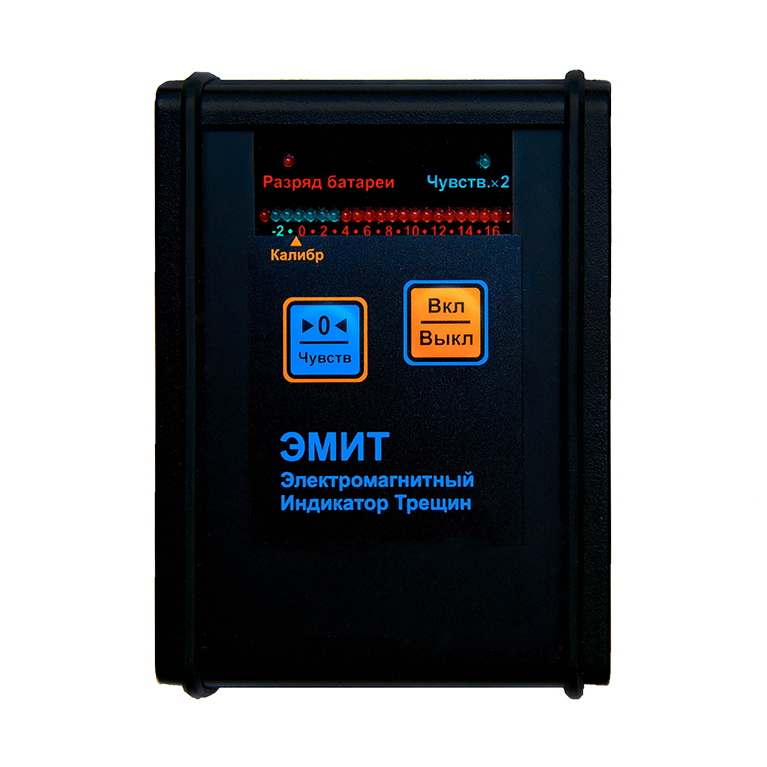Electromagnetic Indicator of Cracks EMIC‑Ex
For explosive areas
Electromagnetic Indicator of Cracks EMIC is designed for measuring of defects depth and detection of their locations during the inspection of products made of ferromagnetic and non-magnetic metals and alloys for presence of surface crack-type defects of fatigue, corrosion and process-induced nature.
Certificate of Rosstandart OC.C.27.002.A No. 35003
In stock
Contact the company manager to order
EMIC-Ex – is a dust-ignition-proof design of the instrument used in explosive areas.
The principle of the instrument's operation is based on measuring of the magnetic leakage field in the zone of cracks.
The EMIC instrument has a small size and equipped with self-contained power supply, wear-resistant sensor; it is easy to operate and adjust.
The instrument adjustment is performed automatically, it is necessary just to install the sensor on the test surface, press the adjustment button, and in a fraction of a second the instrument is ready for operation. During operation, when the sensor crosses the crack, the instrument generates an appropriate sound and light signal, and the size of the crack can be assessed by the readings on the instrument's LED scale.
EMIC has a number of advantages over the conventional eddy-current instruments:
- Dressing or any other preparation of the test surface is not required
- Cracks detection through the layer of paint or insulation up to 2 mm thick
- Ability to operate on rough and corrosion-damaged surfaces
- Cracks detection in conditions of inhomogeneous metal structure, for example, in the area of welds
- No "edge effects"
Technical characteristics of EMIC-Ex device:
| Dimensions of the detected defect for magnetic metals and alloys: | Width at Ra3,2 (Rz20), not less | 0,002 mm |
| Length, not less | 3 mm | |
| Depth | 0,2 - 0,7 mm | |
| Dimensions of the detected defect for non-magnetic metals and alloys: | Width at Ra3,2 (Rz20), not less | 0,004 mm |
| Length, not less | 3 mm | |
| Depth | 0,2 - 0,7 mm | |
| Dimensions of the detected defect for non-ferrous metals: | Width at Ra3,2 (Rz20), not less | 0,004 mm |
| Length, not less | 3 mm | |
| Depth | 0,2 - 0,7 mm | |
| Admissible absolute error of the defect depth measurements | ± 0,1 mm | |
| Admissible inclination between the sensor and the normal to the surface of inspection | ± 10° | |
| Admissible angle between the crack and the sensor plane | ± 30° | |
| Sensor traverse speed relative to the specimen | 0,5 m/sec | |
| Power supply from integrated storage batteries | 3,3 - 4,2 V | |
| Continuous operation time, not less | 40 hours | |
| Operation temperature range | -10 - +40 °С | |
| Relative humidity range at the temperature of +30° | 15 - 90 % | |
| Dimensions | 120x60x20 mm | |
| Weight | 0,5 kg | |
